The Roman Baths are the highlight of any visit to Bath and this was also the case for us. The Romans Baths were first opened in 1897 and are much bigger than most visitors realize. The Grand Bath, which you can see in the photo below, is only about a quarter of the total size of the baths. Much of the baths extend underneath the current street level.
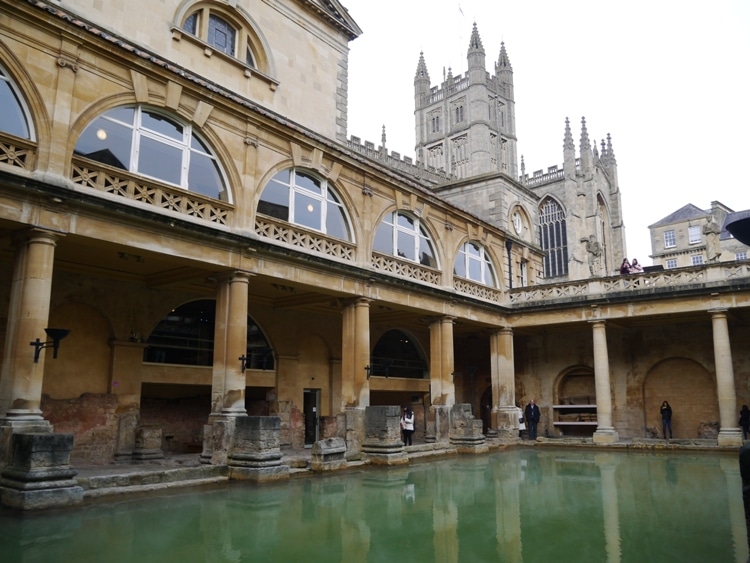
While the Grand Bath is the main attraction for many, there is plenty more to see at this museum. Don’t forget to pick up your audio guide at the ticket office, as the history is quite fascinating. I particularly enjoyed the Bill Bryson audios, as he’s one of my favorite travel writers.
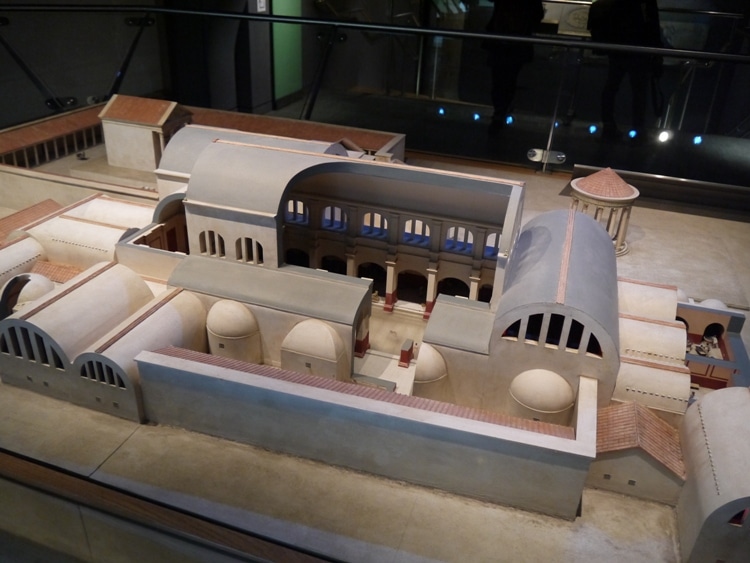
One of the first things you’ll see at the Roman Baths is a model of the baths, temple and spring from around the 4th century AD. This will help you imagine what the place was like when you continue through the museum.
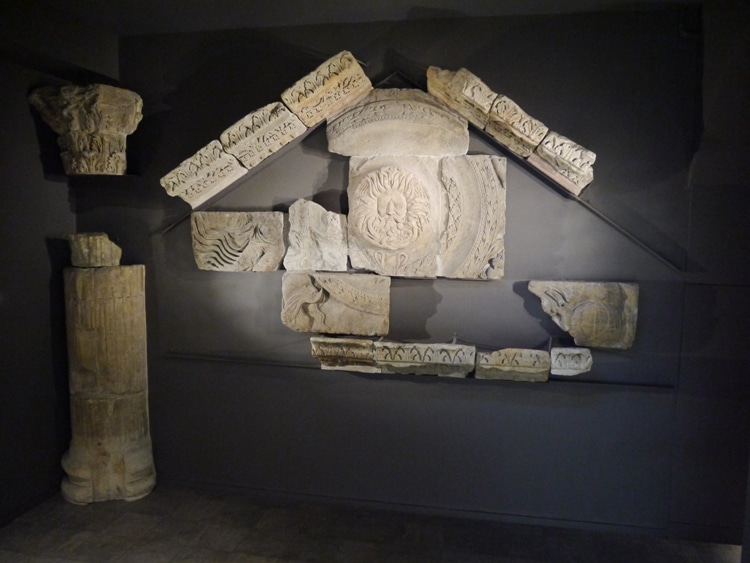
The Temple Pediment shows a head that is thought to be Gorgon’s Head, which was a powerful symbol of the goddess Sulis Minerva.
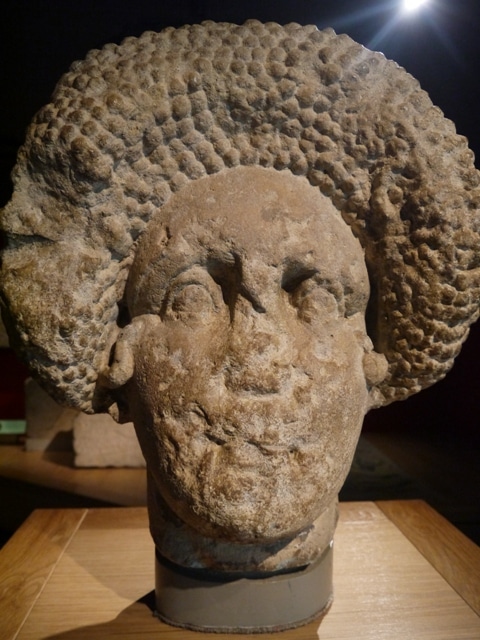
In Roman times the town was known as Aquae Sulis, and part of the museum is dedicated to the people of the town and their way of life. The stone head of a lady shown above dates from the 1st century AD and was found on a tomb in the town.
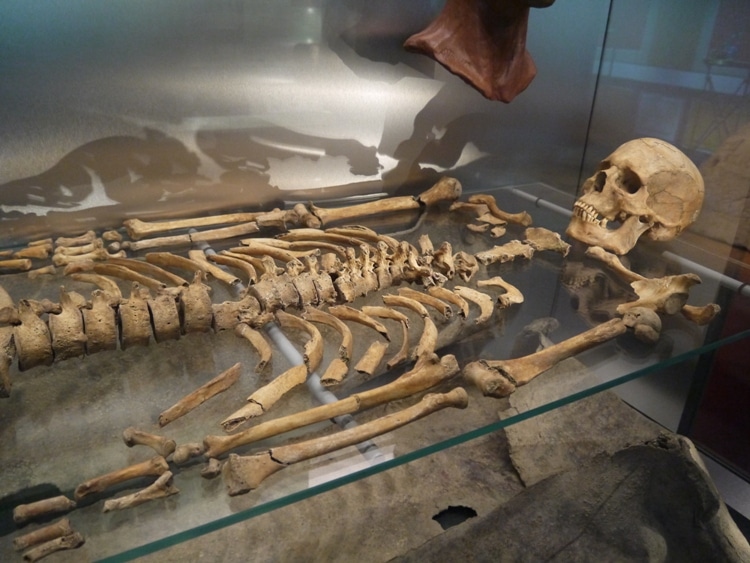
When the people of Aquae Sulis died they were usually cremated, but from the 3rd century AD onwards, burial became quite popular.
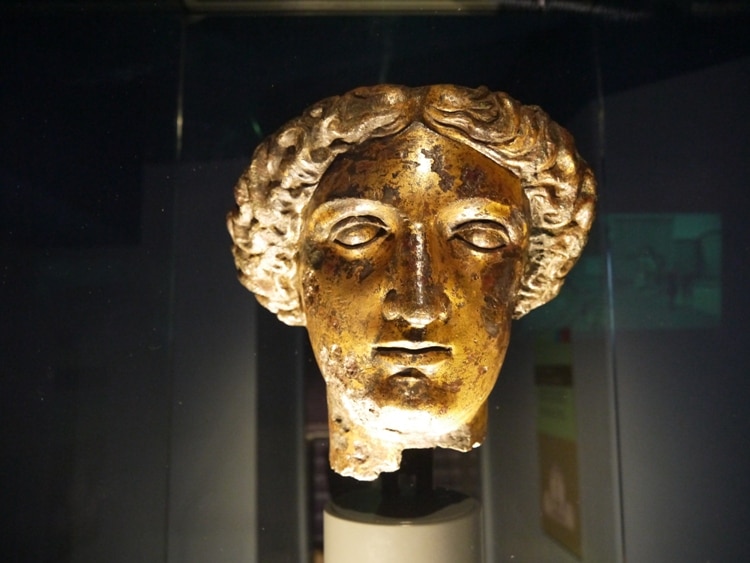
One of the best known objects of Roman Britain is the gilt bronze head of the goddess Sulis Minerva. It is thought to date from around the 1st century AD.
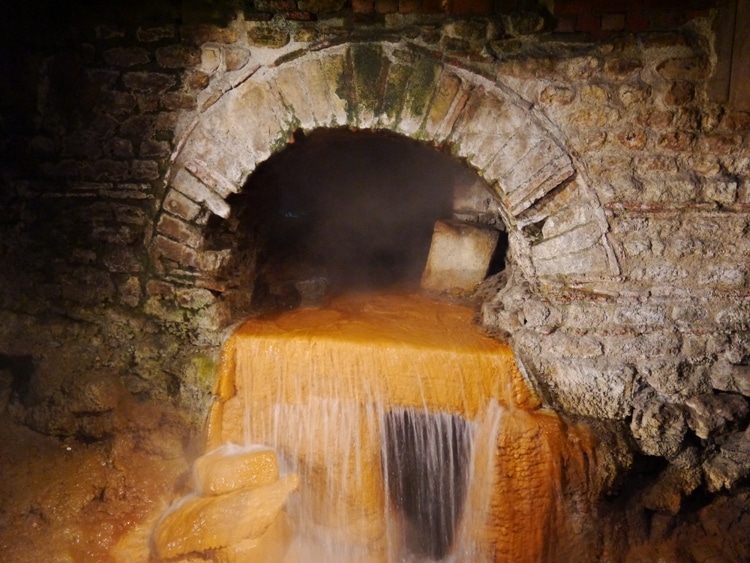
The Sacred Spring is at the heart of the site and water has been rising here for thousands of years. The water is 46C. 240,000 gallons (1,170,000 liters) of water rises every day and is drained away into the River Avon, using the original Roman drain.
Above you can see a video of The Sacred Spring Overflow. It’s very relaxing to stand next to it and just listen to all that water.
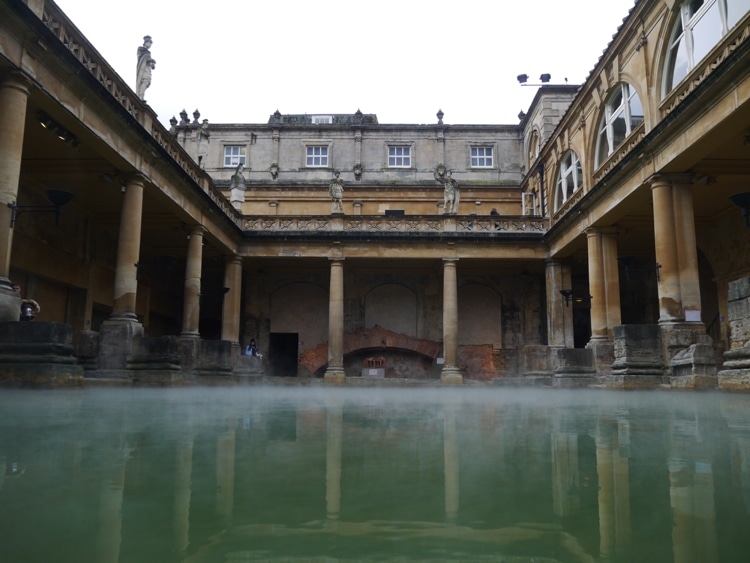
The Great Bath was our favorite part, as this is where you can really begin to imagine what it was like in Roman times. The pool is lined with 45 sheets of lead and filled with hot spa water. The bath is 1.6 meters deep. This would have been a very busy area, with hundreds of people arriving every day.
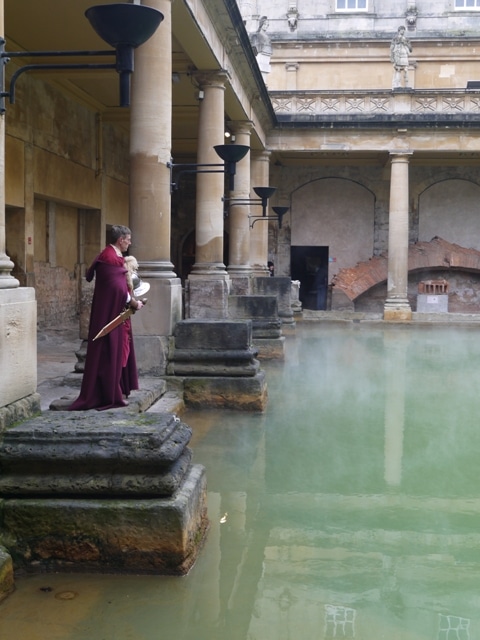
There are costumed characters around the Great Bath that you can have your photo taken with.
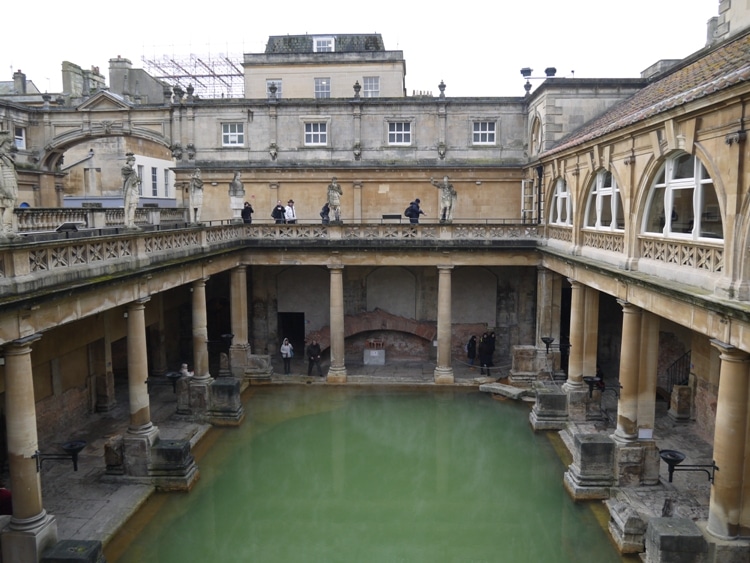
The video below will give you a good idea of what it’s actually like next to the Great Bath.
Roman Baths Essential Information
Opening Hours: Jan-Feb & Nov-Dec 09:30-16:30; Mar-Jun & Sep-Oct 09:00-17:00; Jul-Aug 09:00-21:00 (exit one hour after closing time)
Cost: Adults £14:00 (£14.50 in Jul & Aug); Senior Citizens £12.25; Children £9.00; Families £40.00
Website: romanbaths.co.uk
Ticket prices include a free audio guide in eight languages – English, French, German, Spanish, Italian, Japanese, Mandarin and Russian. There are also written guides available in many other languages, including Thai.
This is a great place to visit for both adults and children.
Hotels In Bath
While in Bath we split our time between the excellent Queensberry Hotel and the budget Travelodge on George Street. For other hotels in Bath, check out Agoda Bath.

